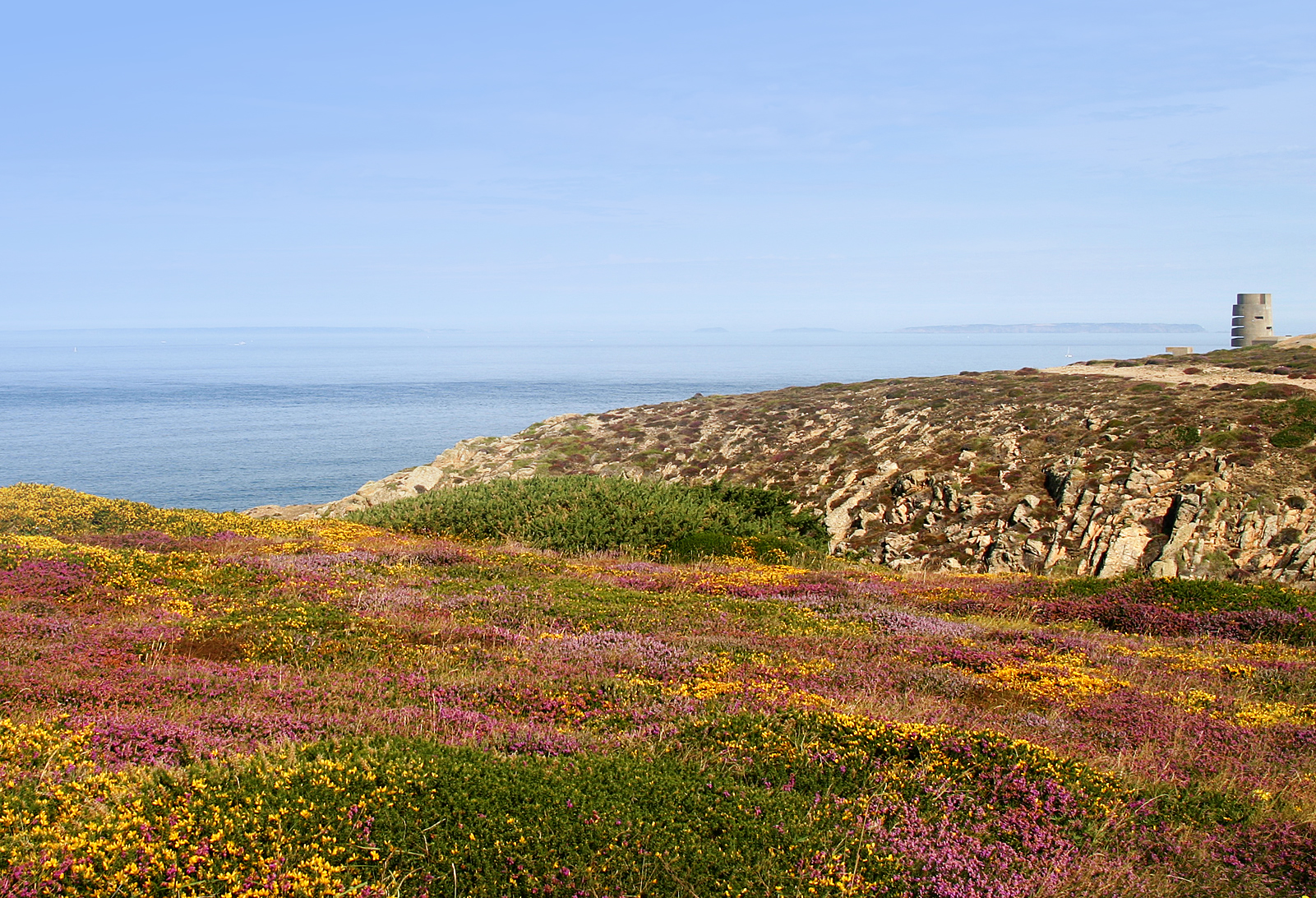Background
Red-billed choughs are considered a rare species in the UK, Ireland, Isle of Man and north west France and, until recently, were classified as locally extinct in the Channel Islands. Changes in agricultural practices decimated their habitat and primary food source, resulting in their rarity. Several other bird species have suffered a similar fate.
Birds On The Edge is a conservation initiative to restore coastal farmland habitat in order to benefit these species. The chough (caûvette in Jerriais) is the flagship for this work and in 2010 Durrell began a captive-breeding programme with the intention of releasing offspring into the wild.
Intensively managed releases between 2013 and 2018, coupled with post-release monitoring and care have resulted in a highly successful reintroduction. The Channel Islands is home once again to a breeding population of choughs.
Notable Events and Successes in 2023
The majority of our breeding success in 2023 centred around our pairs nesting in Ronez Quarry. Interesting observations were noted when checking the nests at the site. There were many more nest spots than usual; which suggested to us that others, perhaps younger choughs, were practicing for when they are mature enough to pair-up and breed. It will be exciting to see if our predictions come true in 2024!
We recorded 18 chicks in nests within Ronez quarry during the year and one from another location which will be ‘assessed’ in the next breeding season. Fifteen of the total 18 chicks fledged to the aviary. Ten of the 18 chicks are still alive to this day and only two chicks out of the 15 that were blood sexed were male. This being said, due to an issue with the laboratory we use to sex birds, we have nine birds that are currently unsexed and who will remain so until they show breeding behaviour in the future. Given the historic sex ratio skew favouring females, we’re hoping that in 2024 a few more males will be produced.
Table 1, indicating the current population size along with the flocks known sex ratio.
Our only ‘wild-hatched’ pair attempted to nest in a stable during 2023 but were unsuccessful in their endeavours. They subsequently returned to Plemont where they have nested before. While it is believed chicks were hatched, sadly they were never seen at the aviary, suggesting they perished.
The pair of chough that have successfully nested at Simon Sands Ltd. were seen nest prospecting in out-buildings at the airport. This behaviour was dissuaded on health and safety grounds. It is hoped they return to the safer location of the old sand extraction site in 2024.
Breeding pair Vicq & Pinel surprised the team this season. They brought one chick to the aviary at the very end of July. This is the first time (to our knowledge) this pair has had a successful breeding season. While there were initial reports of them nesting in a stable building in Trinity, they subsequently chose to nest somewhere else, the location of which is currently unknown. We hope that this will be the start of a successful breeding pair for the future.
The flock has lost a total of nine individuals over the course of the year, but has gained ten new members. Of those choughs that have disappeared, their partners have re-paired up and we hope to see some new successful breeding pairs next season. Overall, it has been a successful year.
Activities in 2023
Primary activities continued as detailed below:
Supplemental feeding
Provision of supplemental food continues daily at Sorel. Attendance by the flock varies seasonally and between individuals. It remains a reliable way to ascertain population size. There are currently forty-seven individuals of which over two thirds are now wild-hatched (Released: 13: wild hatched: 34).
Supplemental feeding allows staff to closely monitor health issues and inter-flock behaviour. Concerns can be flagged up quickly and often dealt with on the spot.
Notable leavers and losses
After forty years of service at Durrell Wildlife Conservation Trust, Dr Glyn Young hung up his boots for the last time in August. He will be enjoying the retired life after much dedication to the Trust. His wisdom and knowledge will continue through the next generation of conservationists who all benefited from his experience.
Sadly, we lost the oldest chough of the flock and one of the two remaining choughs from the project’s first releases back in 2013. Green, although gone has contributed to the population by siring forty-two chicks over the past twelve years; fifteen of which are still alive today.
Research and monitoring
There have been no exciting island-hops for the usual, same-sex pair of choughs to Guernsey this year. Usual visitors to the island, this pair appeared to have broken up, with only one female being observed foraging at Pleinmont. The other female has now found a male worth sticking around for! This could lead to an exciting new breeding pair in the next coming year.
There a few visits to Ronez quarry this year to undertake nest checks. Only two clutches of chicks were ringed in the nest however, as inclement weather prevented other nests being accessed. Subsequent ringing was carried out when youngsters were caught at the aviaries, but three remain unringed at present.
We look forward to 2024 when we welcome a PhD student from Anglia Ruskin University to research the choughs for effects of sound disturbance during the breeding season.
Veterinary cases
One of Kevin and Wally’s chicks from last year’s season (Sallow), was found grounded by a local birder in St John. Initially taken to the JSPCA, Durrell ultimately took responsibility for the bird. It was suspected to have a broken coracoid due to the visual bruising in the area; however, this was thankfully not the case. The chough was also seen to have a low platelet count and was underweight. The veterinary team supplied the chough with pain relief and fluids. The Bird Department provided the diet previously used for the captive choughs. Additional food supplements and tasty treats were given to help fatten him up. In our care, the chough gained 20 grams before he was taken back to the aviary. Before being fully released, we had a licensed ringer, ring the chough and then shut him into one of the sheltered sections of the aviary. He was kept here for a few days to habituate once again to his surroundings and for staff to evaluate his flying ability. Once the team were happy with his progress, he was re-released and is still looking happy and healthy to this day.
The remains of a youngster from 2022, Birch, were found at Ronez. Scant remains were collected, so no post-mortem was performed, but rings allowed us to identity it.
Release aviary maintenance
The Sorel aviary is considered a temporary structure for official planning purposes. Permission to keep the structure standing for the next five years was approved in 2023, which means it will be standing until at least 2027.
Storm Ciaran left devastation throughout the island in 2023 and the aviary at Sorel sustained significant but not catastrophic damage. Large holes were ripped in the netting, and aluminium panelling at the side of the aviary was ripped off. Some of the wooden support structures of the enclosure itself were also left weakened and broken.
The aviary netting holes require National Trust assistance to help bring our large henchman ladder to the aviary to have the holes reachable to fix. We are working on these repairs between the National Trust and our own staff availability. The wooden framework is a much bigger job which will be fixed at a later date by our maintenance team at Durrell.
In autumn, we secured a grant from the Government of Jersey’s Countryside Enhancement Scheme to fund new netting for the aviary. Thanks to the States of Jersey for this funding, which will enable us to replace the damaged netting in 2024.


































